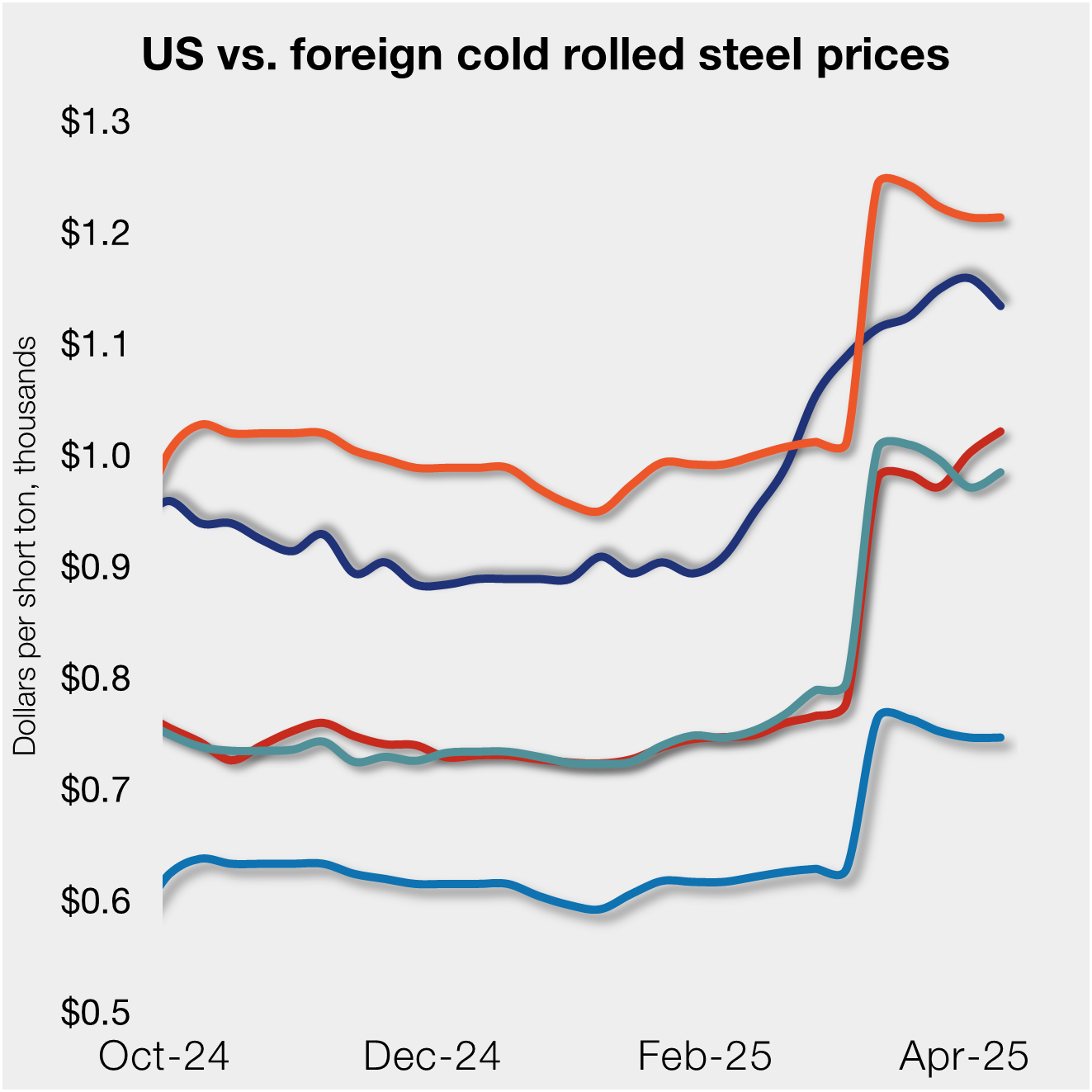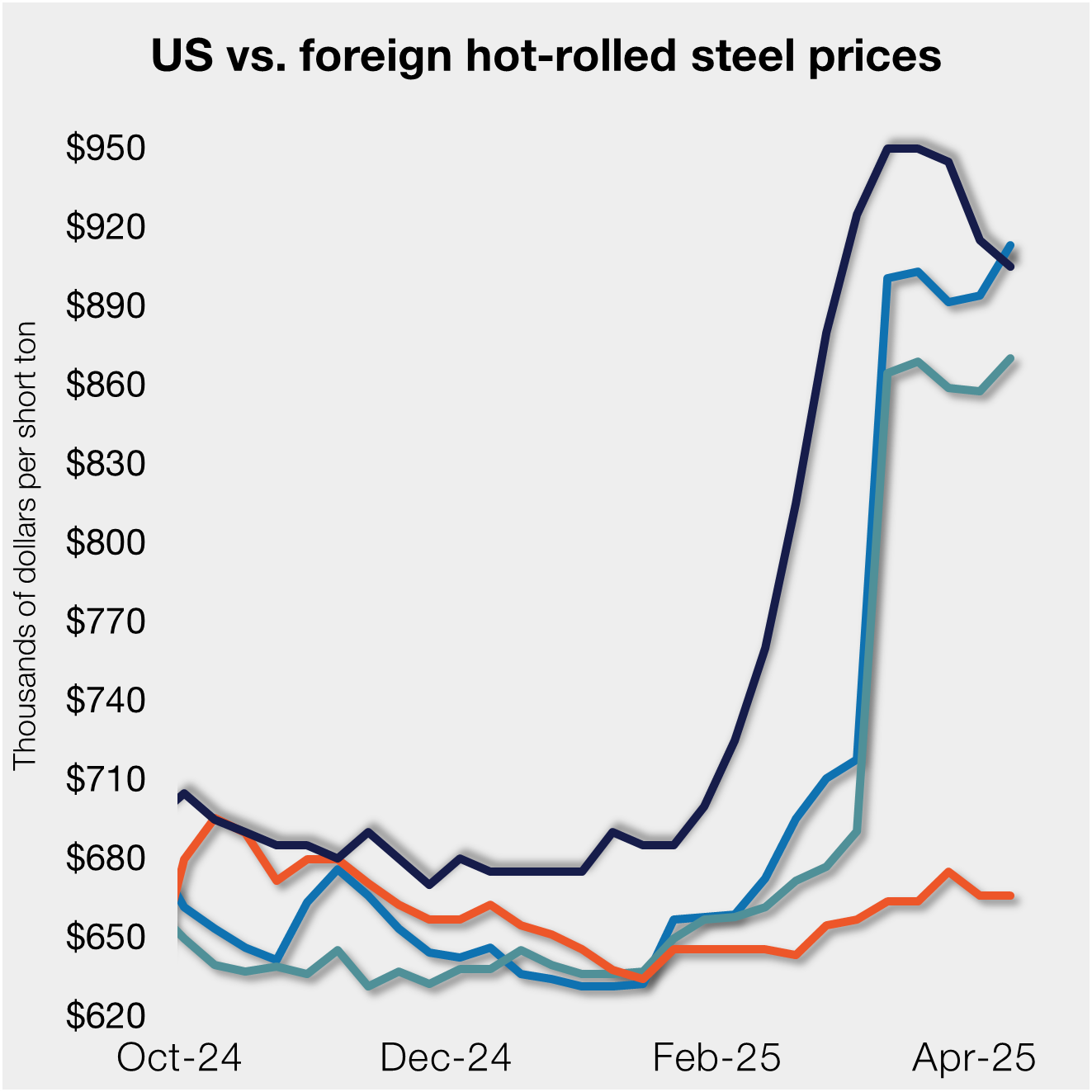Steel Products
Domestic Mills Begin the New Year “Trying” to Hold the Line
Written by John Packard
January 9, 2013
Have tons to buy? Negotiate…
What price you will pay for steel at the beginning of January will depend on a number of variables – but one thing is for certain – if you have tons to buy it is best to negotiate with your suppliers. At least that is what our sources have been telling us over the past two business days.
We spoke with a number of steel buyers – both end users and service centers – and this is what we found.
Size matters – If you have tons to buy – especially something with some “heft” to it – there are a number of domestic mills negotiating to get those orders. Spot hot rolled prices on the low end are reported to be $600 to $610 at a number of flat rolled mills. Cold rolled and coated are approximately $100 per ton over the hot rolled number. Extras should not be ignored during the negotiation process.
If you aren’t buying much, then the prices being seen are about the same as what was available prior to the holidays. A Midwest service center, whose business is actually pretty good according to the email shared with SMU earlier today, told SMU “No change yet John. Everyone is in sitting on their hands to see what the first full business week of the New Year will bring.”
One of the service centers in the east spoke of the mills from the Midwest looking to sell steel into their area, “No changes by the mill on pricing. We are seeing more folks looking to sell steel to us, out of the Midwest.” Meanwhile, in their words, “The Chinese are giving away material.” This service center executive went on to tell us, “We are fine, but the orders are small, with next day deliveries. Pricing is extremely low.”
A manufacturing company which buys both on the spot market and tied to the CRU provided some color as to how they are seeing the market since they returned from the holidays:
“We expect to see the CRU number fall tomorrow to around $625, which puts our actual buying price below $600. I don’t see anything on the horizon that will support higher prices unless scrap gains some strength. Imports are generally flat, unlike last year when a glut of HRC arrived December through March. With lead times as short as they are right now, imports out 8-12 weeks are pretty risky. We could see a domestic price well below $570 by then. Unless you are in Houston or LA and you can save $40 or $50 in freight from domestic mills, imports even as low as $560-$580 are too risky.
All that being said, I do believe the mills will attempt another price increase. They have to. The integrated mills are losing money at the current price and the EAF’s aren’t doing a whole lot better. If scrap goes up they’ll use that. Short lead times are probably preferable to the EAF’s right now given the uncertainty of scrap prices and narrow margins they can’t afford to sell out beyond their known scrap costs. However, short lead times also keep buyers from committing to anything beyond their immediate needs. Long lead times encourage imports. You can’t win if you’re a mill today.
With low inventories a price announcement might even get a few more people to buy, but no one is going to buy anymore than they need any sooner than they need it. You can’t win trying to hedge (even a couple of week’s worth of inventory) in a market that has three week lead times and prices that can change by $10 to $20 per week. So you buy just what you need, and don’t worry about the price.
In an oversupplied market, with inventory-averse customers, uncertain raw material prices, and economic/business uncertainty, this is what you get. Prices fall to or below the cost of production even for the lowest cost operations. That is where we are headed.”
The good news is we are hearing from those with whom we are speaking that demand remains good. As one national service center executive put it, “Demand is steady but not at whiz-bang levels.”
Scrap Prices Move Sideways
Scrap prices in all but the east coast did not increase from last month’s levels. This is the second month in a row where scrap prices have essentially moved sideways in the Midwest. The price appreciation in the east has been modest at approximately $10 per gross ton. Sideways scrap prices are supporting the status quo – at least the psychology behind the status quo – for steel prices to continue to move sideways or to drift from here.
SMU Price Momentum Indicator Stuck in Neutral
With nothing “pushing” the market clearly in one direction or another Steel Market Update (SMU) Price Momentum Indicator continues to be stuck in Neutral. At this point we believe prices will drift from here and we will have to wait and see if the domestic mills allow the $600 per ton level to be broken (HRC). If they are unable to hold the line momentum may have no choice but to follow. Stay tuned.

John Packard
Read more from John PackardLatest in Steel Products

SMU flat-rolled market survey results now available
SMU’s latest steel buyers market survey results are now available on our website to all premium members. After logging in at steelmarketupdate.com, visit the pricing and analysis tab and look under the “survey results” section for “latest survey results.” Past survey results are also available under that selection. If you need help accessing the survey results, or if […]

CRU tariff webinar replay now available
CRU’s latest webinar replay on how Trump’s tariffs affect the global steel market is now available on our website to all members. After logging in at steelmarketupdate.com, visit the community tab and look under the “previous webinars” section of the dropdown menu. You’ll find not only this special CRU webinar but also all past Community […]

US, offshore CRC prices diverge
US cold-rolled (CR) coil prices declined this week, slipping for the first time since early February. Most offshore markets deviated, moving higher this week.

Construction growth slowed in March on tariff woes: Dodge
The decline comes after reaching a record high in January to kickstart the year.

Return of S232 zapped gap between US and EU HR prices, Asian HR remains cheaper
Domestic hot-rolled (HR) coil prices declined this week for a third straight week. Most offshore markets bucked the trend and gained ground. Uncertainty in the US market around tariffs, especially after “Liberation Day,” caused US prices to slip as buyers moved to the sidelines. It’s unclear to date whether the 90-day pause on the more […]
